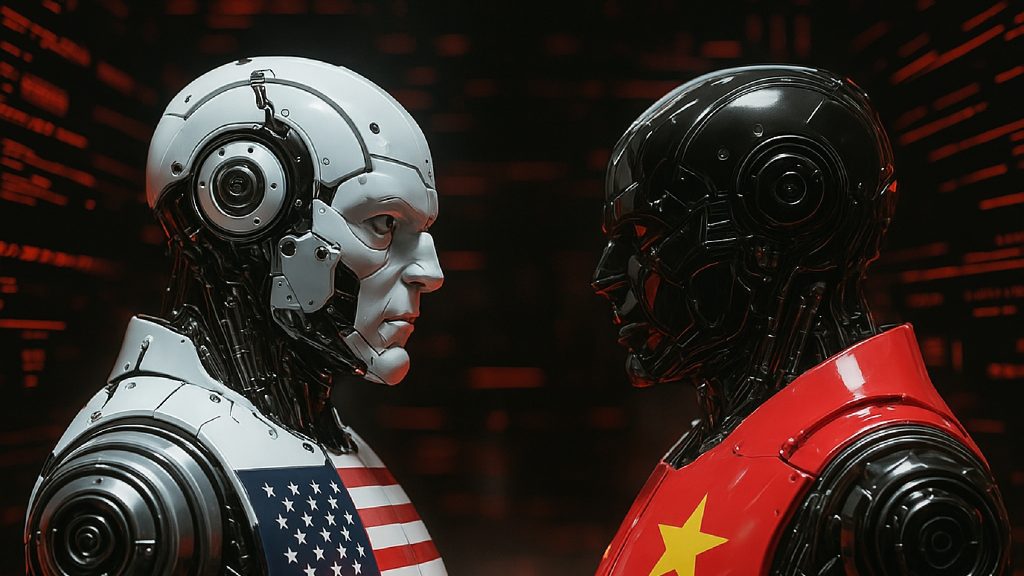
A Stanford HAI report reveals the global AI race is intensifying, with the China AI plan closing the gap on US dominance through surging AI patent filings and state-backed advancements.
China now accounts for 61% of global AI patent applications (WIPO 2024), while its “Next Generation AI Development Plan” has spurred breakthroughs in areas like computer vision and NLP. The US still leads in foundational models, but Beijing’s focus on industrial AI applications is reshaping competitiveness.
According to Stanford HAI’s 2025 AI Index, while OpenAI and Google remain ahead, rivals are quickly closing the gap. When ChatGPT first rose to fame, OpenAI and Google led the AI sector, but by 2025, the industry has grown formidable way.
AI Race’s New Players
Locally, competition is fueling with Meta’s open-weight Llama models, Anthropic (established by former OpenAI employees), and Elon Musk’s xAI. Most notably, China’s AI patent filings and AI development plan have sent Chinese entities like DeepSeek to new heights.
DeepSeek’s reasoning model, DeepSeek-R1, is now almost same level with leading US models, as “Chinese models are catching up as far as performance to the US models,” explained Vanessa Parli, HAI’s research director.
The report explains that China AI development plan has put the country ahead of the US in AI research papers and patents filed. US is still ahead of China in formulating the most impactful AI models, with 40 frontier models compared to China’s 15.
On the other hand, China new generation plan of AI development is significant, Chinese companies are quickly advancing AI technology as China 2025 AI plan comes into full effect. The report also indicates that the US government has reacted with the US federal AI legislation, which is set to establish regulatory standards and challenge the rapid expansion of AI.
One of the biggest AI trends is the rise of “open-weight” models – open-source and customizable. Meta’s Llama models, first released in 2023, lead this shift, with Llama 4 launched recently. The performance gap between open and closed models narrowed from 8% to 1.7% in 2024, though 60.7% of advanced models remain closed.
China AI Plan
The need for AI and machine learning talent has risen, with more and more workers using AI to revolutionize their work. In 2024, private AI investment hit a record $150.8 billion, with global governments also contributing significantly. China AI plan and AI-related legislation in the US has doubled since 2022, echoing the industry’s increasing prominence.
The report indicates a surging interest in AI safety and reliability, with some models having already surpassed human capability in certain activities, like recognizing images and language understanding, a sign of imminent progress toward Artificial General intelligence (AGI).
Final Thoughts
The global AI race is entering its revolutionary era, and China is now a driving force. China is scoring progress in research and real-world AI application with the guidance of the China 2025 AI Plan. China’s ability to produce high-performance models like DeepSeek-R1, supported by the growth in China’s filings of AI patents, indicates that it is increasingly making its mark.
In response, the US is accelerating through increased federal AI legislation and overall US AI legislation to safeguard innovation while covering safety and regulatory concerns. As both nations accelerate AI development, the tightening performance gap means a new world in which AI leadership is no longer the preserve of a few American tech giants. Instead, the path to AGI is now an international competition, decided by policy, innovation, and global rivalry.
Inside Telecom provides you with an extensive list of content covering all aspects of the tech industry. Keep an eye on our Intelligent Tech sections to stay informed and up-to-date with our daily articles.